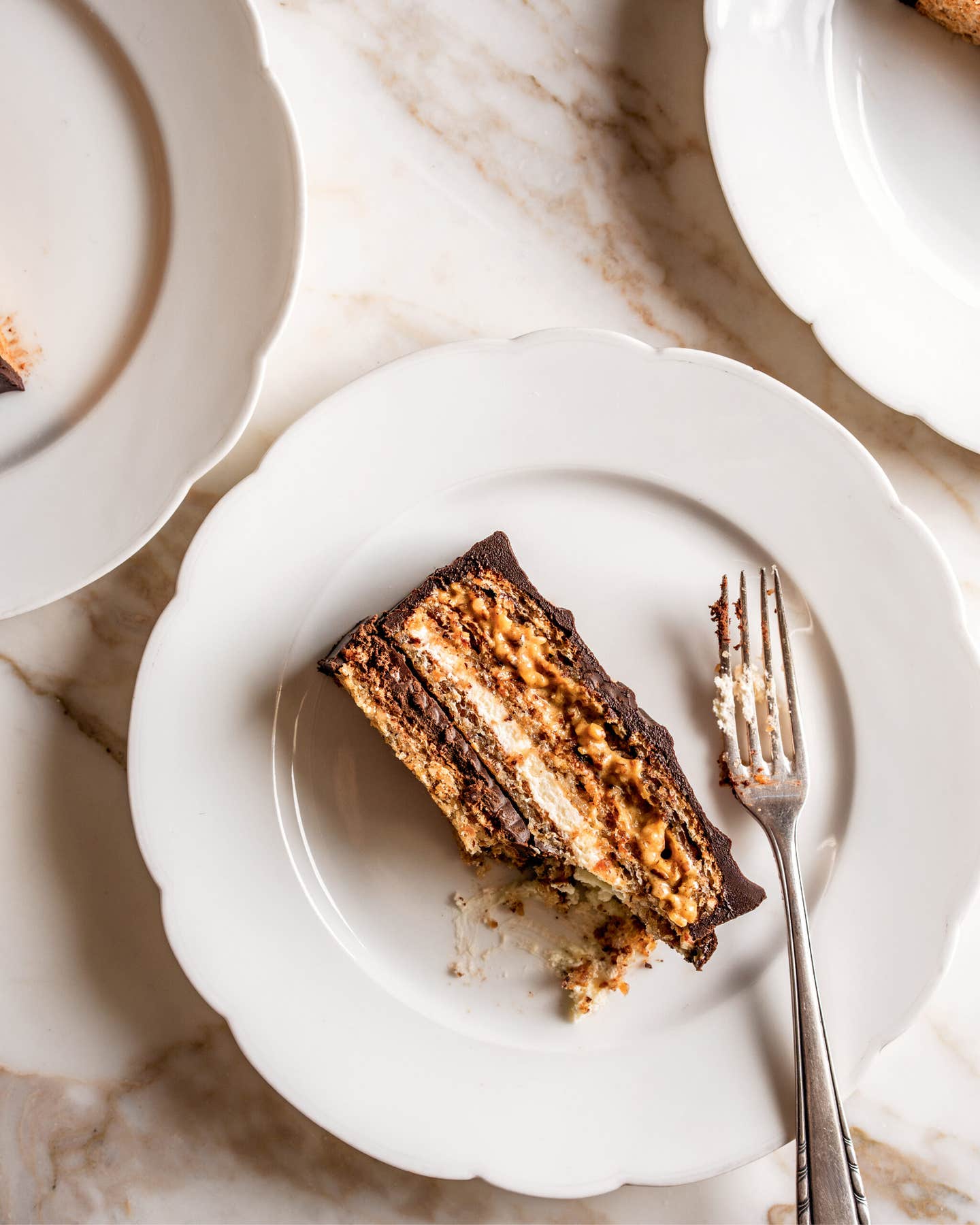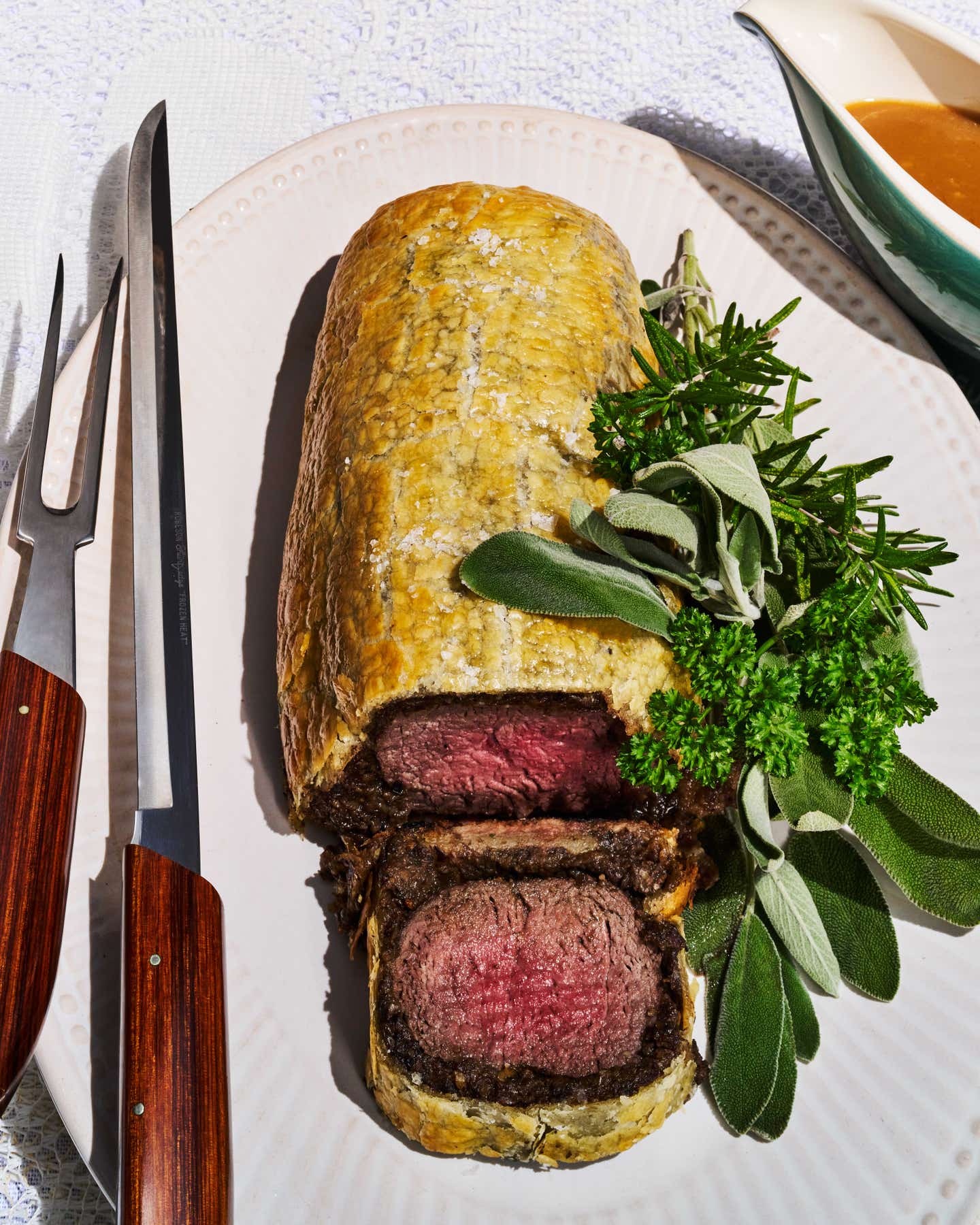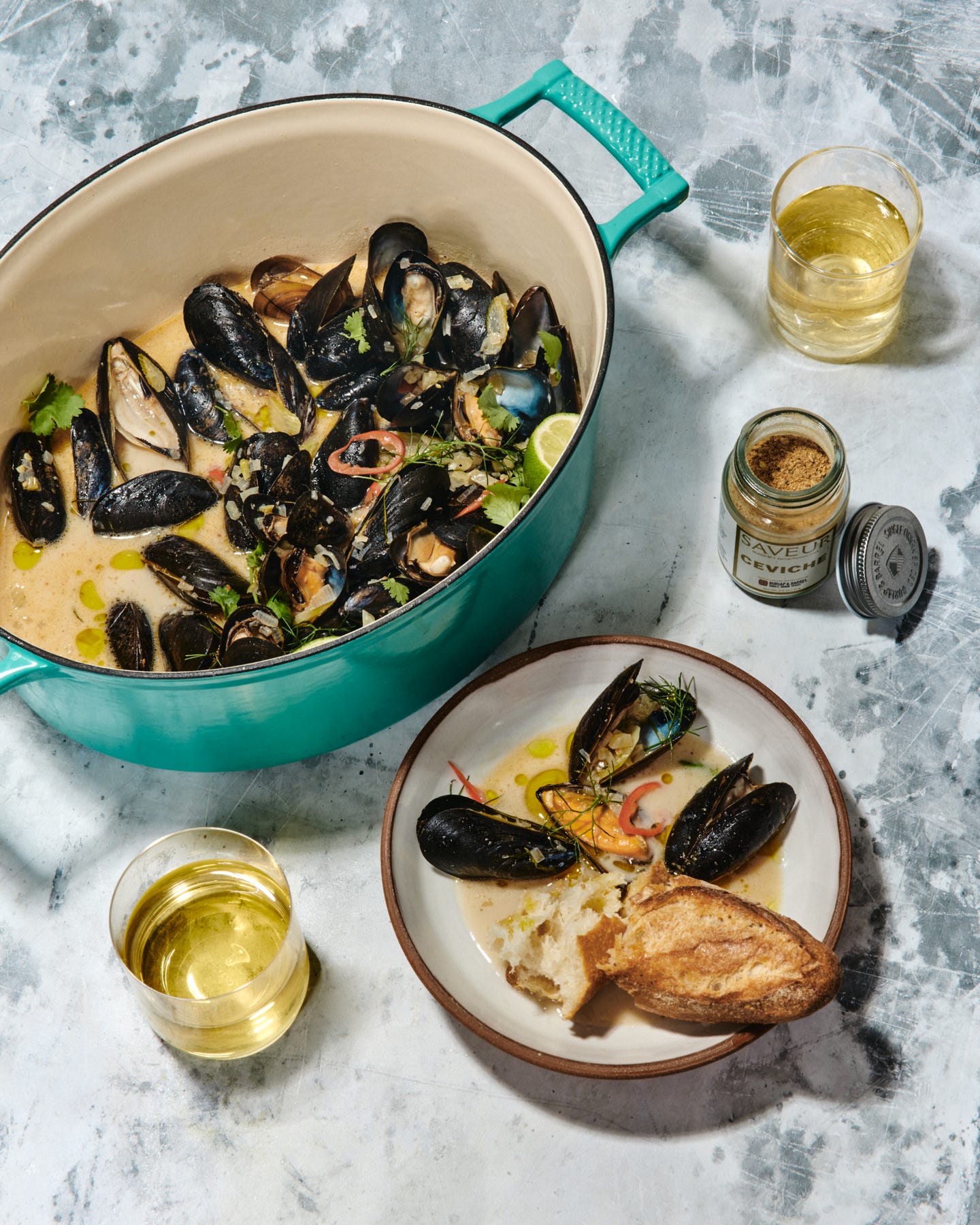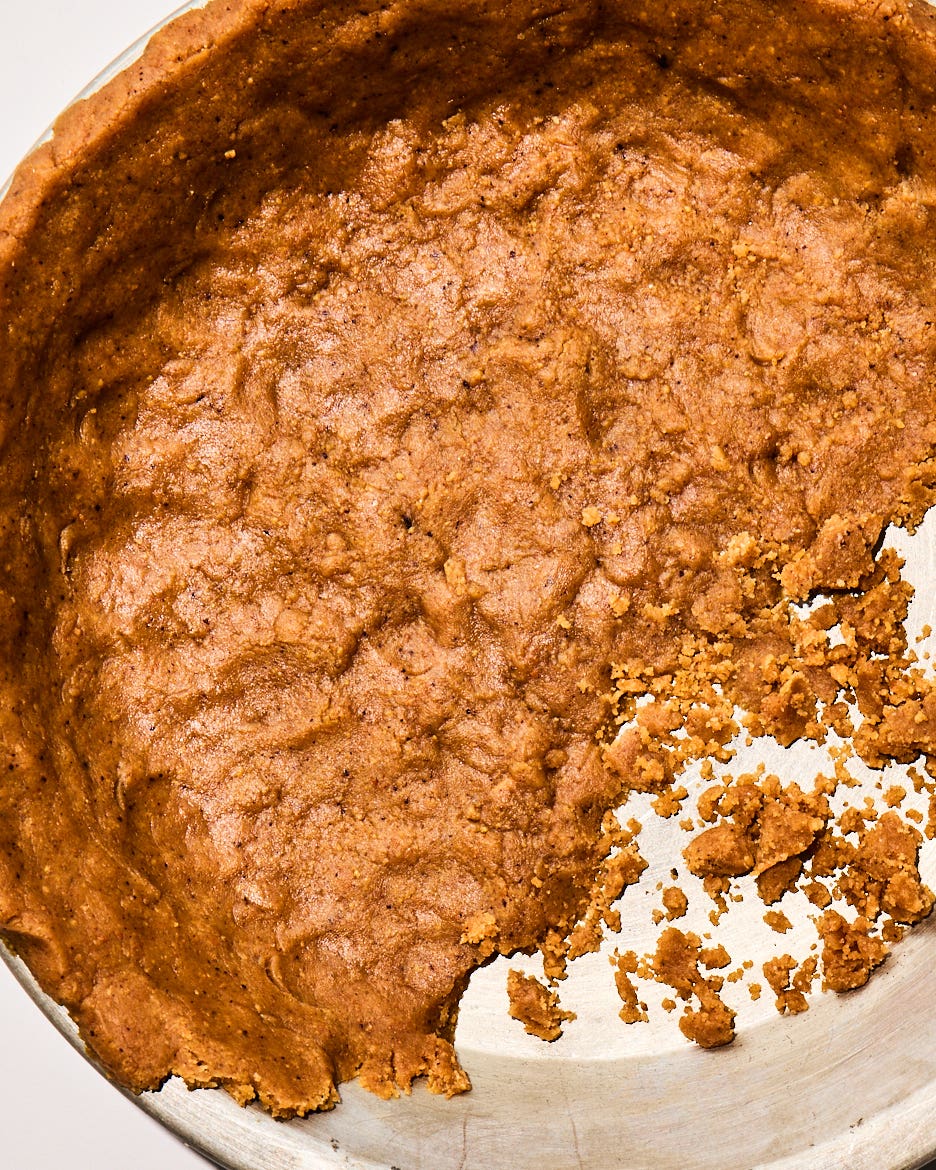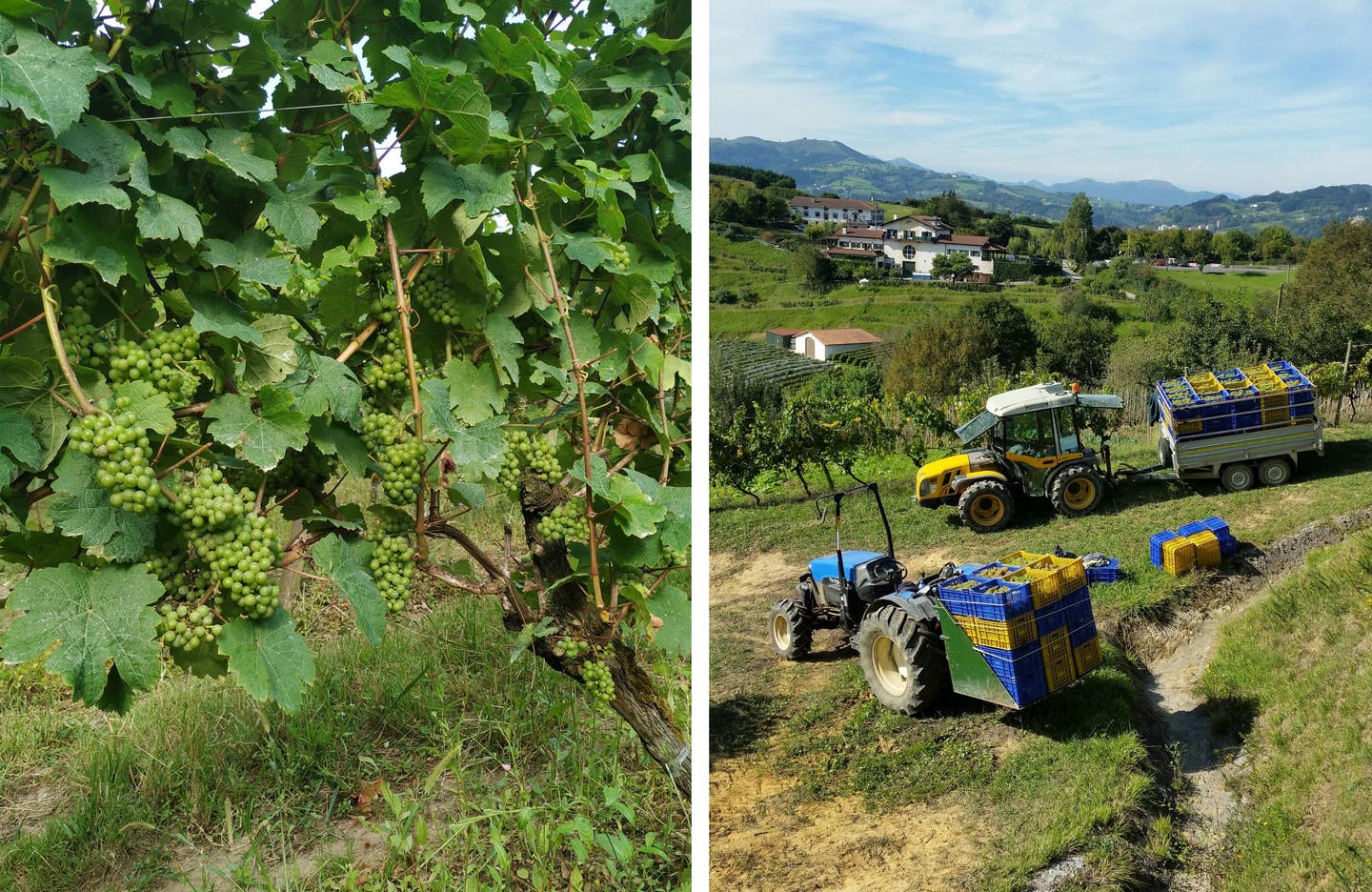
This Basque Winery Is Reinventing Vermouth With a Regional Grape (and Sustainable Methods)
Light and effervescent, the drink is already popping up on menus in the U.S.
On the gentle slopes of Mount Talai Mendi in Zarautz, a lush coastal town in Northern Spain, you’ll find Talai Berri winery inside a traditional-looking Basque building with whitewashed facades and pine-green shutters. The terrace, where visitors graze on Basatxerri sausage and Idiazabal cheese, washed down with refreshing Txakoli wine, looks out on nearly 30 acres of rolling green vineyards. Beginning in July, visitors can witness the vineyard’s wooly workers performing their work in earnest—in exchange for free lunch, they nibble away excess vegetation and leave behind healthy vines, a natural form of intervention.
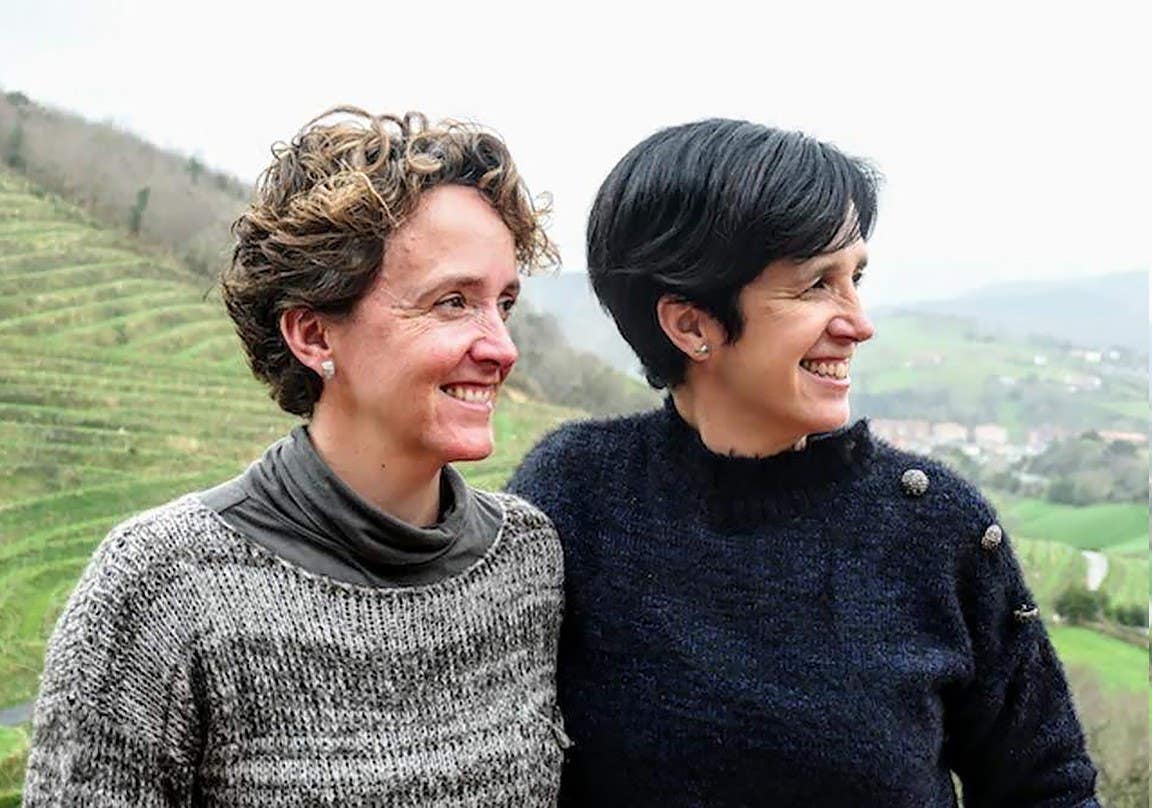
Onditz Eizagirre, who runs Talai Berri with her sister, Itziar, says that the fluffy, adorable sheep support the vineyard’s mission of reducing the use of pesticides and producing the highest quality Txakoli, the gently effervescent, low-alcohol, typically white wine of Basque Country. “We want to produce in a way that respects the surrounding environment—the quality of the air, the land, and the animals,” says Eizagirre. Late last year, the fifth-generation winemakers released in the U.S. a new vermouth called Tximista. Made with Hondarrabi Zuri grapes, the same variety used for Txakoli, and infused with dozens of local aromatic herbs, Tximista is an entirely Basque creation, and Talai Berri is the first and only producer to make vermouth from 100% Txakoli grapes. With the rising popularity of vermouth in the U.S., not to mention the reverence for Basque wine and cuisine in general, Tximista might just become the next big happy hour staple.
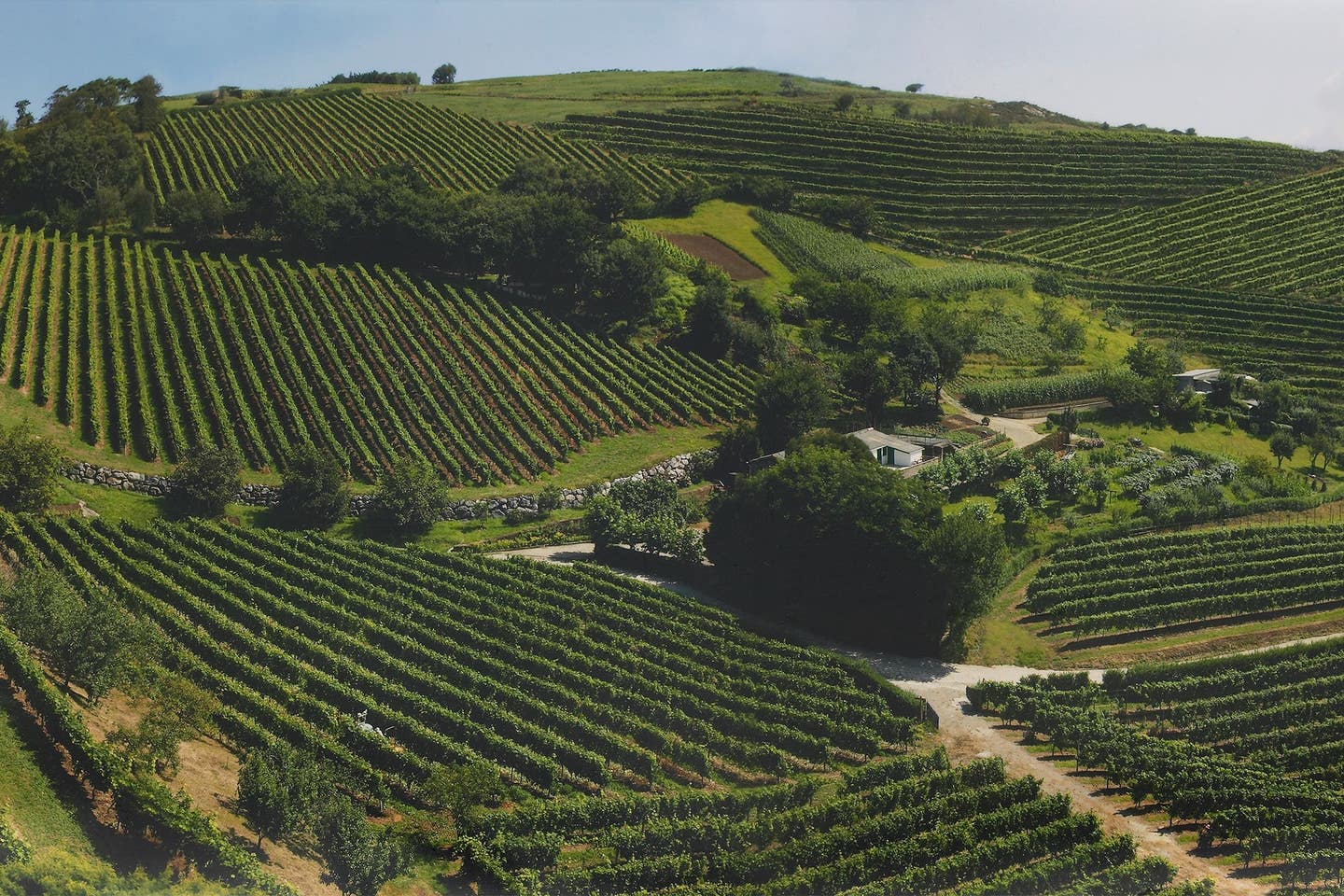
When I picture Basque Country—a place I was fortunate to call home for a year during my twenties, barely surviving in the kitchens of a couple of Michelin-starred restaurants in Bilbao—I see various shades of green: the briny gildas in any pintxo bar worth its salt; the traditional grass-green Txakoli bottles; the verdant landscape blanketed with foliage. The region is famously rainy, and for winemakers—especially on the coast where humidity is even higher—the threat of mildew and mold is constant, rendering chemical-free winemaking nearly impossible. Eizagirre tells me there are a few Txakoli wineries that are completely ecological—fully free of pesticides or chemical fertilizers—but they’re located further inland and at higher sea level.
According to David Rosoff, owner of the recently reopened Bar Moruno, a Spanish restaurant in the Silver Lake neighborhood of Los Angeles with a robust Iberian beverage menu, Basque eco-winemaking is rare, especially in Getariako (one of three official Txakoli appellations in Basque Country), where the pressure from mildew is intense and unrelenting. Bengoetxe is one certified-organic winery located in a mountainous inland region in a town called Olaberria. In fact, the owner, Iñaki Etxeberria, had to fight regional authorities for inclusion in the denomination, which was previously limited to a few coastal villages.
There are three DOs, or Denominaciones de Origen (appellation of origin), for Txakoli: Arabako, Bizkaiko, and Getariako. In 2010, Talai Berri was the first in Getariako to receive “producción integrada” certification, a middle-ground between conventional and ecological agriculture. Since then, more local winemakers have followed suit.
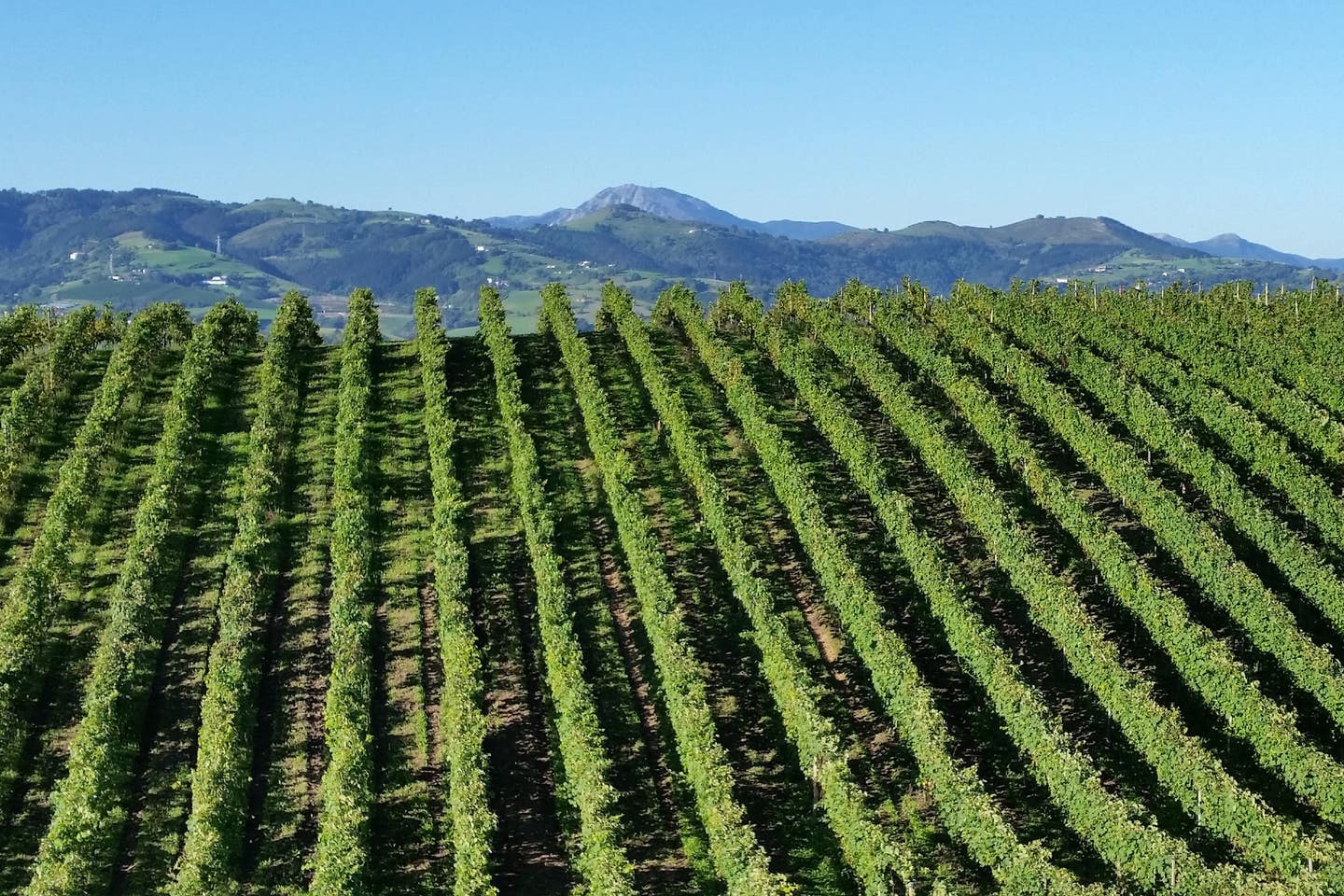
The impetus for sustainable winemaking is clear. Dr. Kristin Reynolds, Chair of the Food Studies Program at The New School and Lecturer at Yale School of the Environment, tells me that the environmental impacts of the wine supply chain are multifold: greenhouse gas emissions, notably from production and transportation, and their contributions to climate change; the health and environmental impacts of pesticides and fungicides used in viticulture. Reynolds notes that farmworker exposure to these chemicals is a major environmental justice concern.
“Viticulture practices such as reduced pesticide and fungicide use, and organic or biodynamic farming can reduce the impact of these chemicals on the environment,” she explains. When I ask Eizagirre about the growth of sustainable winemaking in Basque Country, she says, “As a small vineyard, you have to focus on quality, otherwise it will be difficult to survive.” To her, sustainability and quality are almost interchangeable terms. The ethos of biodynamic winemaking is that minimizing waste and the use of pesticides not only helps ensure sustainability, but it also improves the final product. On the website of Demeter, the largest certification organization for biodynamic agriculture, the organization notes, “You will often hear Biodynamic winemakers say that their goal is to make the best wine by making the most authentic wine.” Authentic, in this context, isn’t a cultural concept—it implies a genuine, untainted connection to the land.
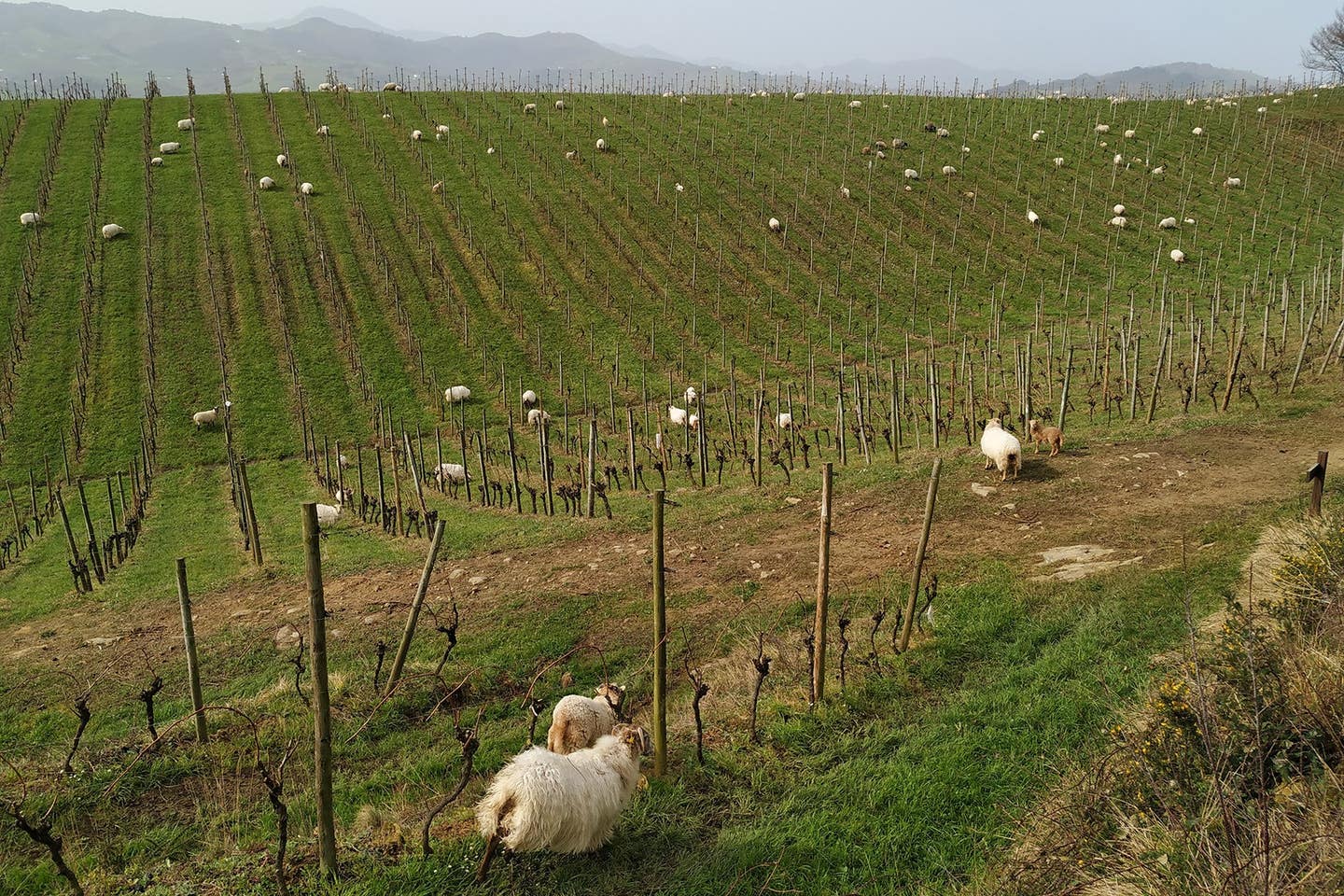
In light of Basque Country’s perpetually rainy climate, it takes some innovative thinking to produce the most authentic wine. Eizagirre tells me that employing sheep to prune the vines was a technique practiced by farmers and winemakers in generations past, but that Talai Berri was the first in Getariako to put sheep to work in their vineyard in modern times. Eizagirre adds that they received valuable advice from winemakers in Bizkaiko (one of the other DOs, southeast of Getariako), who had also been working with sheep: “They told us not to use all of the sheep at once, because otherwise, they eat like crazy—se comen como locos—and could damage the vines. When the sheep are more relaxed, they eat little by little.” It was a steep learning curve for Talai Berri, but their Bizkaiko colleagues helped them get Operation Oveja (sheep) up and running.
Talai Berri also uses meteorological tools to learn about weather conditions, which dictate if and when to spray their vineyards with pesticides, in order to keep their use to a minimum. More recently, the sisters joined an experimental project with four other Txakoli winemakers to use bats to curb noxious insects. “The bats live in the trees on the vineyard and every night each bat eats up to 10,000 insects. Thanks to them, we don’t have to use products against these insects, which can hurt the grapes and cause mold to grow,” explains Eizagirre.
While these innovative solutions have led to successful, low-chemical harvests, other winemakers rely on a mix of science and good old-fashioned elbow grease. Iñaki Etxeberria of the aforementioned Bengoetxe, for example, cares for and cultivates the vineyard himself, “patiently and scrupulously,” according to the winery’s website. Come late September, he harvests the grapes mechanically using a small harvester, and transports them to the winery within 10 minutes to minimize oxidation—perhaps tedious but meaningful gestures that obviate the need for chemical fertilizers or pesticides.
Despite the challenges, sustainable winemaking in the Northern Spain autonomous region continues to climb. According to data from Ekolurra, the Euskadi Council for Organic Agriculture and Food, the cultivation of organic vineyards in Basque Country has doubled in the last five years, with a present total of 984 hectares (or about 2,431 acres) of certified organic vineyards.
While a steady rise in low-intervention Basque winemaking was happening on one side of the Atlantic, the other side was seeing an upsurge in Basque wine drinking. Txakoli wine has entered the mainstream, so much so that it’s almost superfluous to spell out the pronunciation—but here’s a quick explainer anyway: The tx is always pronounced “ch.” As author Mark Kurlansky wrote in The Basque History of the World, “The language seems more difficult than it is because it is so unfamiliar, so different from other languages. Its profusion of ks and xs looks intimidating on the page, but the language is largely phonetic with some minor pitfalls.” The oldest living language in Europe, Euskera, together with its particular spellings, are one of many points of pride that the Basque have fiercely protected. Another, of course, is their food and wine.
According to Eizagirre, Basque cuisine was an ambassador for Txakoli and a foot in the door to markets outside of Spain. The unique wine was an easy crowd-pleaser. While red and rosé Txakolis do exist, the variety is mainly white. Txakoli tends to be light (8%-11% ABV), mildly acidic, refreshing, spritzy, and sometimes a touch salty. And they’re highly drinkable—it sips as easily as water and its buzz tends to sneak up on you. Given the relatively recent swell in popularity of Txakoli in the States, it’s not hard to imagine that vermouth made from the same grapes will ride the wave of all things Basque.
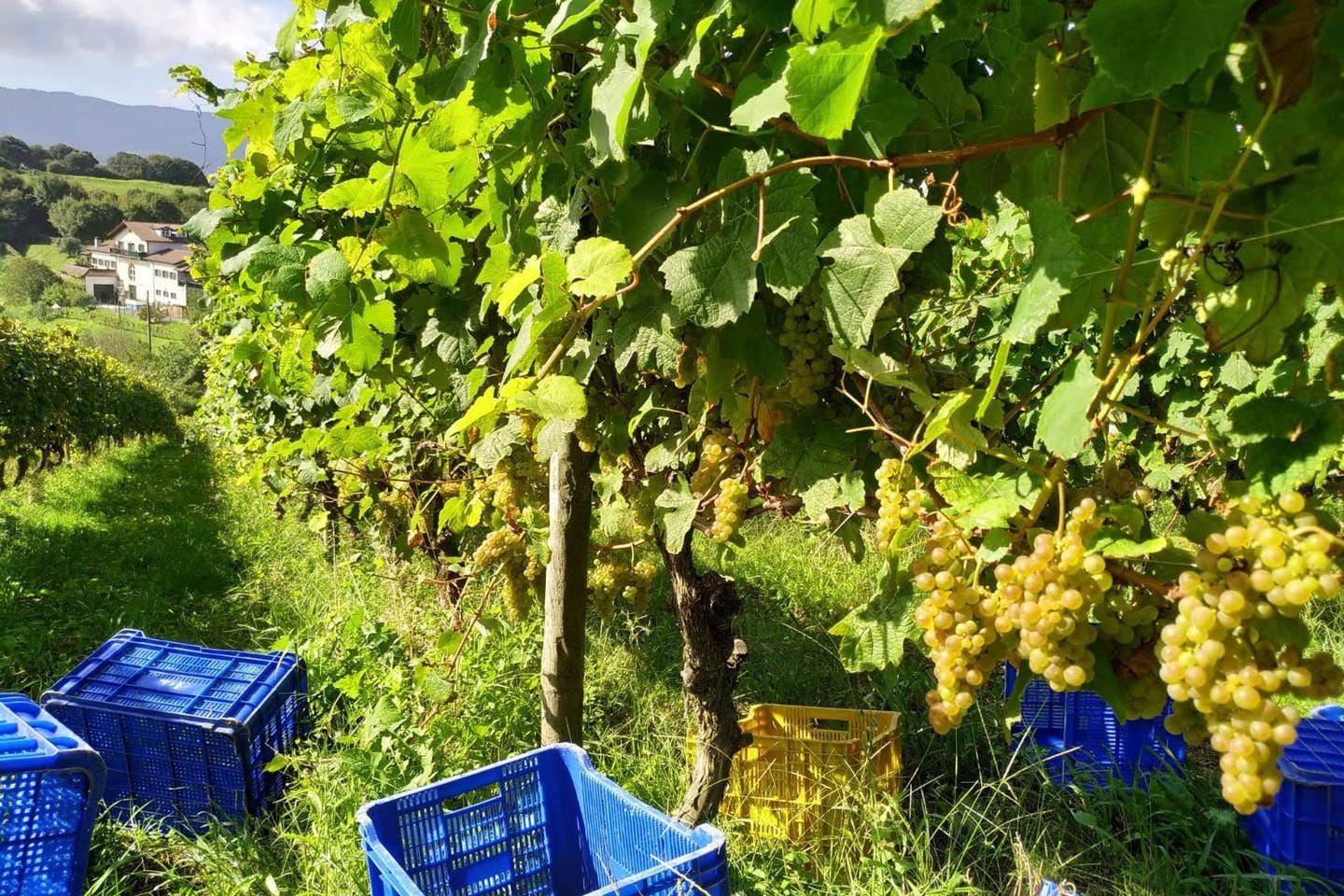
Vermouth has already been experiencing a renaissance, and not only in the U.S. According to Eizagirre, “In the past five years, there’s been a boom in vermouth in Basque Country. Before, it was something that older people drank. But there’s been a style shift, and now younger people drink vermouth, too.” Marti Buckley, author of Basque Country and cofounder of the International Society for the Preservation and Enjoyment of Vermouth, estimates that the ongoing vermouth boom in Spain started a decade ago. The organization Food and Wines from Spain attributes it to younger generations rediscovering “the vermouth hour,” when families in Spain would meet for a pre-lunch aperitif. According to Buckley, from 2014 to 2018, a gradual build turned into an absolute craze. As she explained in an email, “Everything [vermouth] touched was synonymous with effortless coolness, with that vintage retro sheen. The number of artisan vermouths blew up exponentially, and the makers that have been around for over 100 years enjoyed new attention, many of them renewing their brands and embracing the new attitude around vermouth.” Though the vermouth trend has fizzled slightly, Buckley says that midday vermouth remains a norm of local life in Spain on weekends, and vermouth drinkers are savvier than ever—hip to the different brands and how to best serve the beverage.
Nearly 10,000 kilometers away in Los Angeles, David Rosoff has observed a similar shift. “Even in the first week of operations [at Bar Moruno], I'm floored by how many people are ordering vermouth.” But it’s on bar owners to source the good stuff, not the “industrial plonk,” as Rosoff describes lower-quality vermouths—and then, to present it as an essential part of the dining or bar experience.
So, what does that experience look like? While good vermouth, made from high-quality grapes, can make a classic cocktail like a Manhattan or a martini even better, purists tend to keep it simple. At Talai Berri, the sisters serve Tximista in a small glass with ice. “For the sweet vermouth, we add a slice of orange. For the white vermouth, a slice of lemon,” says TK. There will usually be some olives on the table to munch in between sips. And importantly, they only serve the vermouth as an aperitivo, to whet the appetite. At Bar Moruno, Rosoff serves it similarly, but his customers are more apt to order it in a cocktail or as a digestif. Trends may pave the way for tradition, but in the end, preference always prevails.
When I chatted with Eizagirre, it was mid-March. The sheep, which belong to one of the winery’s neighbors, were not in the vineyards. In Eizagirre’s words, the land was still “sleeping.” Tourism was just beginning to trickle back after a total halt due to COVID-19. They were hopeful that the spring would bring more visitors—so far, things are looking brighter. I asked her whether those visitors seem to appreciate their sustainability efforts.
“When people visit the vineyard, we have a huge terrace with views of the vineyard and the landscape with the sheep. But it’s not just a pretty picture or a pretty story that we tell. People who come to the vineyard get to know my sister and me. They see what we do for themselves,” says Eizagirre. Their passion and dedication are obvious. And of course, the products speak for themselves, too.
Keep Reading
Continue to Next Story
